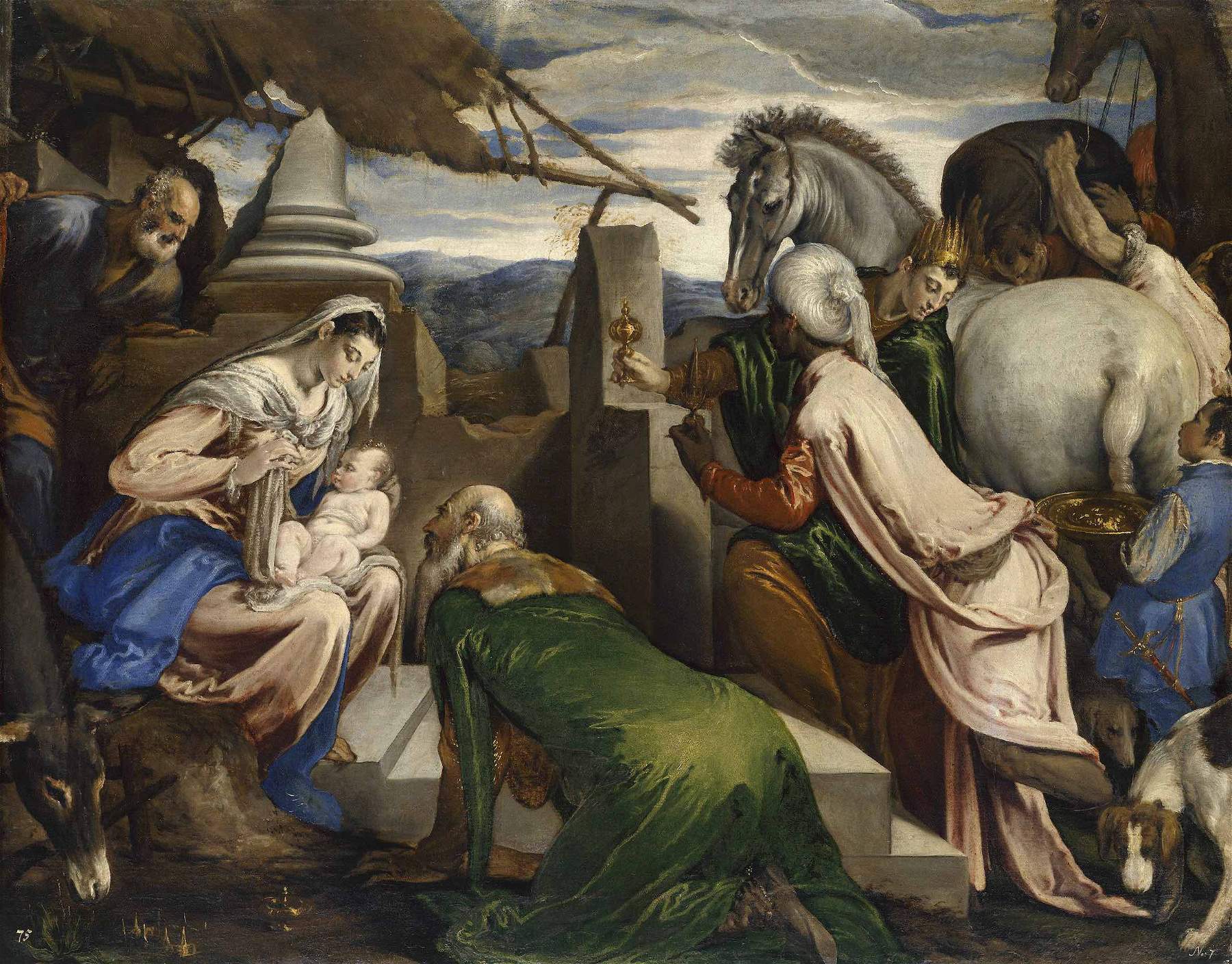From Palladio to Veronese, Vicenza's great Renaissance on display at the Basilica
On view from December 11, 2021 to April 18, 2022, at the Basilica Palladiana in Vicenza is the exhibition The Renaissance Factory. Creative Processes, Market and Production in Vicenza, curated by Guido Beltramini (director of the Andrea Palladio International Center for the Study of Architecture), Davide Gasparotto (Senior Curator of Paintings at the J. Paul Getty Museum in Los Angeles) and Mattia Vinco (researcher of History of Modern Art at the University of Trento): this is an exhibition that reconstructs the important events of the Vicenza Renaissance, and in particular thirty years of Vicenza’s exceptional artistic life, from 1550 to the inauguration of the Teatro Olimpico in 1585, thanks to the genius of architect Andrea Palladio, painters Paolo Veronese and Jacopo Bassano and the great sculptor Alessandro Vittoria. For the occasion, moreover, some of the great masterpieces of painting, sculpture and architecture of the time return to the city after centuries, displayed along the route alongside books, tapestries, textiles and precious objects. The exhibition also reflects for the first time on the modes of creation, methods and value of the three arts, weaving a close dialogue between them and tracing compositional similarities and differences: the aim is to take the visitor inside the forge of creativity (the “factory,” precisely) of the Renaissance.
In the mid-sixteenth century Vicenza was among the most dynamic areas in Europe for silk production and trade, and it experienced an amazing transformation, becoming a capital of culture thanks to the project of the cosmopolitan city nobility, which invested and bet on the vision of a group of young artists: Palladio, Veronese, Vittoria and Bassano. Tying them together is a passion for the new art nurtured by the Ancient, born in the Rome of Michelangelo and Raphael, what Vasari would call the “modern manner,” whose strength would allow them to unhinge the traditional models dominant in Venice, along with the suggestions offered by artists such as Giulio Romano and Parmigianino.
The exhibition, which brings together many of their masterpieces, now preserved in the world’s best-known and most important museums, aims to investigate, first and foremost, the mechanisms of creation and production that generated them, placing them within their original context and in relation to their patrons. There will be no shortage of comparisons between the creative processes proper to sculpture, painting and architecture with the identification of relevant analogies, for example, in the working methods of Veronese and Palladio. Many of the works will also be juxtaposed, often for the first time, with their inspirational models, the drawings and sketches that “prefigured” them, and the reproductions of the same subject made by the artist. It will be possible to enter the artists’ workshop and admire the painting surrounded by the statues, plaster casts and drawings represented in the painting itself: this is the case with the splendid Portrait of an Artist in the Workshop by Palma the Younger, on loan from the Birmingham Museums Trust collections. Veronese’s two portraits of Livia Thiene and her husband Iseppo Porto alongside their children fit into this perspective. Thanks to the willingness of the Uffizi Galleries in Florence and the Walters Art Museum in Baltimore, for the first time in five hundred years the Porto couple are reunited, returning “home” to their city, just a few hundred meters from the palace built for them by Andrea Palladio. Palladio’s drawing for the palace, now preserved at the Royal Institute of British Architects in London, will also be on display alongside them.
Then there will also be, for example, the two “twin” paintings of theAdoration of the Magi by Jacopo Bassano, from the Birmingham Museums Trust collections and the Kunsthistorisches Museum in Vienna, which will be placed side by side for the first time. And then, thanks to collaboration with a team of specialists in economic history, it will also be possible to dwell on a generally lesser-known aspect related to the pecuniary value of these masterpieces. In the sixteenth century, in fact, the birth of collecting and the art market profoundly changed the production methods of the workshops. Research carried out for the occasion will provide insight into the prices of the works on display, comparing them to the objects of everyday life at the time, with answers that mostly contradict our current sensibilities: one of the most beautiful and original paintings of 16th-century painting, Jacopo Bassano’s Two Hunting Dogs, arriving from the Louvre in Paris, for example, was worth half as much as a pair of “ladies’” gloves and a thousand times less than Valerio Belli’s engraved crystals, on loan from the Vatican Museums.
The exhibition is sponsored by the City of Vicenza in collaboration with the Andrea Palladio International Center for Architectural Studies and the Fondazione Teatro Comunale Città di Vicenza and is organized by Marsilio Arte. The curators Beltramini, Gasparotto and Vinco are joined by the scientific committee, composed of Linda Borean (University of Udine), Howard Burns (professor emeritus Scuola Normale Superiore, Pisa), Francesca Del Torre (Kunsthistorisches Museum, Vienna), Edoardo Demo (University of Verona), Barbara Furlotti (Courtauld Institute, London), Germano Maifreda (University of Milan), and Xavier Salomon (The Frick Collection, New York). The exhibition is part of a larger cultural project to enhance the city of Vicenza, a candidate for Italian Capital of Culture in 2024, and to revitalize the Basilica Palladiana, which is destined to host exhibitions of international significance. A catalog published by Marsilio accompanies the exhibition.
Nell photo: Jacopo Bassano, Adoration of the Magi (1555; oil on canvas; Vienna, KunsthistorischesMuseum). Photo KHM-Museumsverband
 |
| From Palladio to Veronese, Vicenza's great Renaissance on display at the Basilica |
Warning: the translation into English of the original Italian article was created using automatic tools. We undertake to review all articles, but we do not guarantee the total absence of inaccuracies in the translation due to the program. You can find the original by clicking on the ITA button. If you find any mistake,please contact us.





























